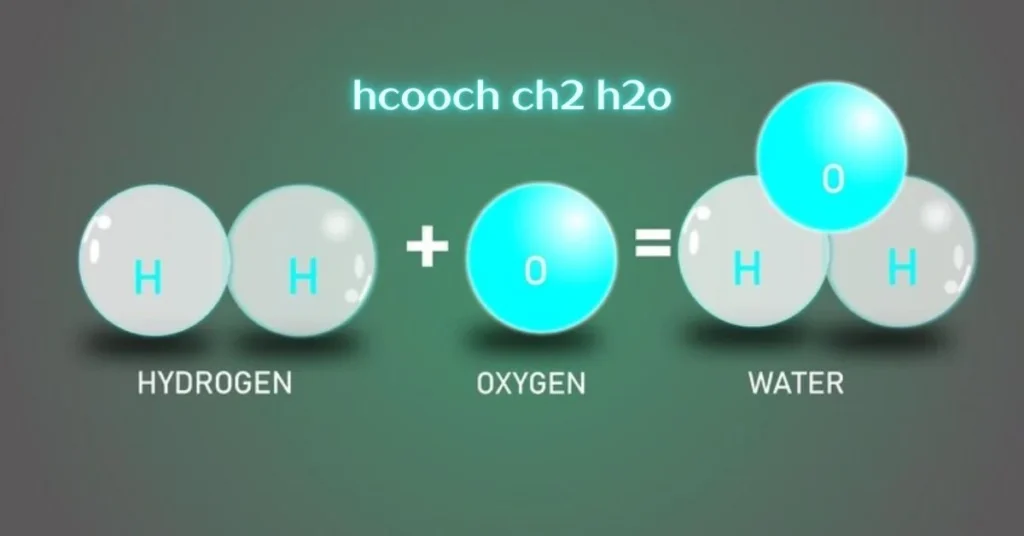Introduction to Green Catalysis
Green catalysis is transforming chemical reactions by making them more sustainable and eco-friendly. As the world shifts toward renewable resources, innovative methods that reduce waste and energy consumption are essential. One notable advancement is the formation of water as a clean byproduct, especially involving the catalyst HCOOCH CH2 H2O. This compound is gaining attention for its ability to enhance water formation in green chemistry processes, offering promising implications for sustainability.
The Importance of Water in Green Catalysis
Water plays a critical role in green catalysis reactions, contributing to sustainability in multiple ways:
- Ideal Solvent: Water facilitates reactant interactions while minimizing toxic byproducts.
- Eco-Friendly: Using water reduces dependence on harmful organic solvents.
- Energy Efficient: Many water-based reactions occur under mild conditions, saving energy and operational costs.
- Enhanced Reaction Rates: Water’s solvent properties promote faster kinetics and better yields.
- Improved Selectivity: Paired with catalysts like HCOOCH CH2 H2O, water boosts efficiency and selectivity.
These features make water indispensable in advancing sustainable chemical reactions.
HCOOCH CH2 H2O: A Promising Catalyst for Water Formation
What Makes HCOOCH CH2 H2O Unique?
- Molecular Structure: It facilitates water formation by enhancing reaction rates.
- Efficiency: Helps minimize energy consumption and waste.
- Versatility: Applicable in fields ranging from pharmaceuticals to renewable energy.
- Eco-Friendly: Aligns perfectly with green chemistry principles.
Scientists are exploring its molecular mechanisms to unlock further potential for sustainable innovations.
How the HCOOCH CH2 H2O Reaction Works
The reaction mechanism involving HCOOCH CH2 H2O typically follows these steps:
- Bond Activation: The catalyst facilitates breaking bonds in reactants.
- Water Formation: Formate ester groups in HCOOCH CH2 interact with water molecules, producing new products.
- Mild Conditions: Reactions occur under gentler temperatures and pressures compared to traditional methods.
- Selective Pathways: The catalyst’s structure enables selective reactions with improved yields.
- Energy Efficiency: The process requires less energy input but maximizes output, producing water as a clean byproduct.
This cascade effect highlights the eco-friendly nature of the catalyzed reaction.
Advantages and Applications of HCOOCH CH2 H2O
Key Benefits
- High Efficiency: Speeds up reactions while lowering energy use.
- Versatility: Useful in pharmaceuticals, biofuels, and other industries.
- Environmentally Friendly: Enables mild reaction conditions and reduces hazardous waste.
- Scalability: Potential for large-scale industrial use without compromising performance.
Real-World Applications
- Pharmaceutical Synthesis: Improves yields and reduces toxic solvents.
- Renewable Energy: Plays a role in hydrogen storage and fuel cells.
- Green Manufacturing: Supports sustainable chemical production with minimal environmental impact.
Challenges and Future Outlook
Despite its promise, HCOOCH CH2 H2O faces several challenges:
- Scalability: Translating lab successes to industrial scale remains complex.
- Stability: Maintaining catalyst integrity under varying conditions is crucial.
- Optimization: Ongoing research focuses on improving activity and selectivity.
- Technological Advances: Nanotechnology may enhance catalyst performance further.
Future progress depends on strong collaboration between academia and industry to overcome these hurdles and realize practical sustainable solutions.
Conclusion: Green Catalysis and Sustainable Chemistry
Green catalysis marks a crucial step toward sustainable chemical practices. Catalysts like HCOOCH CH2 H2O enable water formation reactions that minimize waste and maximize efficiency, making them vital to eco-friendly innovation. Water’s role transcends being a mere byproduct—it’s a symbol of sustainable, energy-efficient chemical processes.
As research advances, these green catalytic methods are expected to reshape chemical manufacturing, helping industries meet global sustainability goals while protecting the environment.
FAQs
What is HCOOCH CH2 H2O and why is it important?
HCOOCH CH2 H2O is a catalyst used in green chemistry to facilitate water formation during reactions, enhancing sustainability by reducing waste and energy use.
How does water improve green catalysis reactions?
Water acts as an eco-friendly solvent that promotes efficient interactions, reduces toxic byproducts, and allows reactions to proceed under mild conditions.
In which industries can HCOOCH CH2 H2O’s be applied?
It is used in pharmaceuticals, renewable energy (such as fuel cells), biofuels, and other green manufacturing processes.
What are the main challenges of using HCOOCH CH2 H2O?
Challenges include scaling the process for industrial use, ensuring catalyst stability, and optimizing reaction conditions.
How does this catalyst contribute to sustainability?
By enabling efficient, low-energy reactions that produce water as a clean byproduct, it supports eco-friendly manufacturing and reduces environmental impact.






